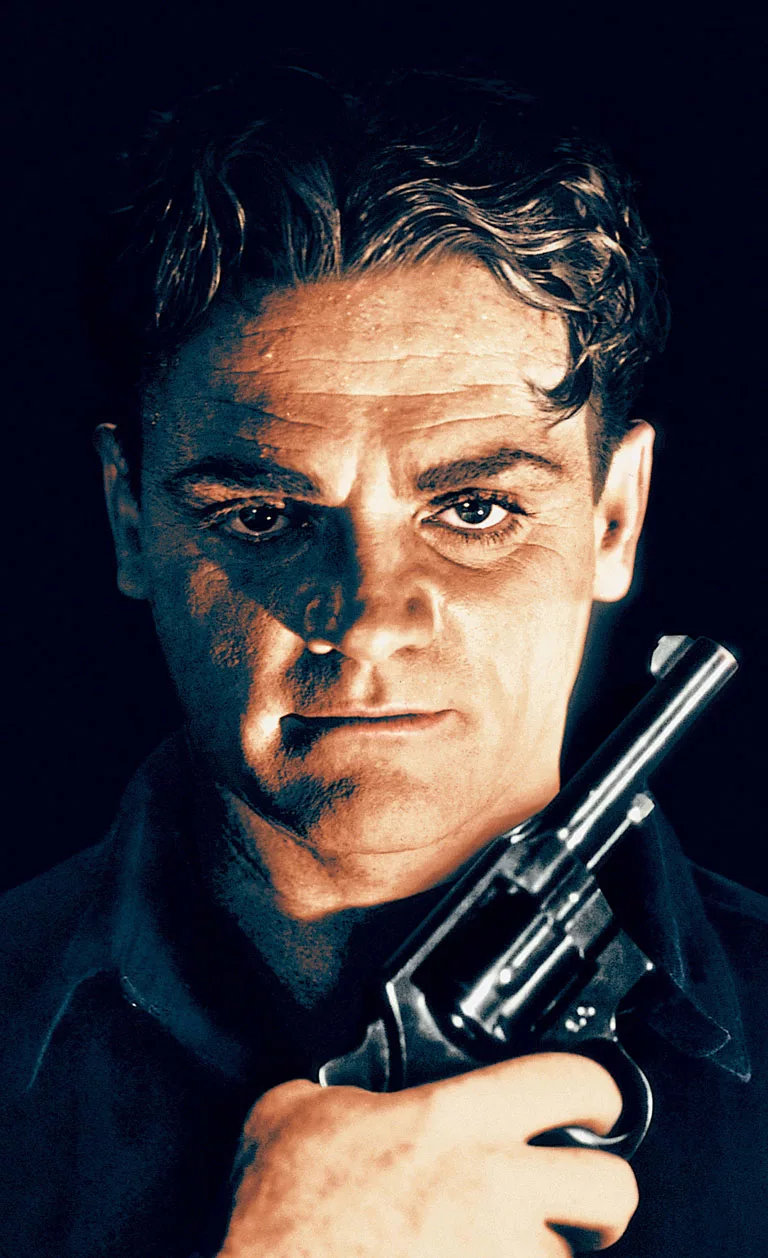The Roaring Twenties (1939), freshly remastered this year in 4K, is the last and greatest gangster film of the 1930s.
It has a lot of competition for that title: the 1930s were to gangsters what the 2010s were to superheroes. In 1932 alone, Hollywood (mostly Warner Bros.) produced twenty-eight gangster films. The best remembered ones are the “original trilogy” – Little Caesar, The Public Enemy, and Scarface – unconnected films which together are credited with establishing the cinematic gangster genre. All three trace roughly the same Al Capone-inspired formula about the rise and fall of an organised crime lord. Their stars – Edward G. Robinson and James Cagney in particular – came to embody the Hollywood gangster. After a backlash accusing Warner Bros. of glorifying crime, the stars were swapped round for a few films to the side of the law: Robinson as an undercover policeman in Bullets or Ballots, and Cagney as an FBI agent in G Men, a surprisingly punchy thriller filled with car chases, fistfights and machine-gun attacks. Some frothy attempts were also made at watering the gangster genre down into farce, such as The Little Giant, The Whole Town’s Talking and A Slight Case of Murder; while more serious efforts included The Petrified Forest, Dead End and Angels with Dirty Faces.
The Roaring Twenties, however, was different: it follows the original trilogy’s rise-and-fall-of-a-crime-lord structure, but does so much more. For one thing, director Raoul Walsh makes the film a genuine epic, opening in the European trenches and ending in Depression-era New York. The script, far above the usual pulpy stuff, is controlled but memorable. (A snippet of dialogue between two arrested bootleggers runs: “I know a lawyer” / “It’d be better if you knew a judge”).
Most significantly, whereas most prior gangster films had depicted gangsters who happened to be human beings,The Roaring Twenties is about human beings who happen to be gangsters. It is therefore the only gangster film of its era to bear comparison with the later masterworks of Francis Ford Coppola and Martin Scorsese. (Incidentally it is one of Scorsese’s favourite films). We follow the hero, Eddie Bartlett (James Cagney) through his demobilisation, his struggles with unemployment, and an abortive romance, long before he gets involved in organised crime.
Even when Eddie eventually begins his rise in the underworld – with its tangible atmosphere of grimy bricks, machine-guns, beer barrels, dancers and nightclubs – we care more about him than about his career. There are some dynamic action sequences – notably the assassination attempt on Eddie and the late-night raid on a storehouse – but these scenes are secondary to the human drama.
For instance, the murder of Eddie’s oafish sidekick by rivals is a moment of genuine personal sorrow. Eddie’s fraught relationship with his psychopathic business partner and rival George (Humphrey Bogart, in his thuggish pre-Casablanca days) goes beyond cliched gang rivalry and is given nuance by the fact that they fought together in the trenches. Cagney and Bogart had previously been paired to good effect in Angels with Dirty Faces, and they retain excellent chemistry and tension.
It is worth comparing Eddie’s personal life to that of previous screen gangsters. His romance with Jean (Priscilla Lane) is sincere, and he tries to win her over by elevating her to stardom. He is the last to find out when she leaves him for his lawyer, but does not – as earlier gangsters would have done – go off on a killing spree. Instead, after a moment of aggression, he swallows his bitterness and quietly walks away. It is far easier to sympathise with such a character than with Cagney’s “Public Enemy” of eight years earlier, who liked nothing more than to shove grapefruits in his girlfriend’s face and go around murdering in cold blood. It is a credit to Cagney (whom Orson Welles called “maybe the greatest actor who ever appeared in front of a camera”) that he could play either character equally convincingly.
Eddie’s downfall is classically tragic: he is a victim of both the forces of history and his own emotions. The Wall Street Crash reduces him from a glamourous mob supremo to a drunkard taxi driver. In the end, however, it is his love for Jean that kills him. In order to protect her family, he dies in a shoot-out with his old rival George (Walsh is too good a director for this scene to become melodramatic). The final line – “He used to be a big shot” – is spoken over Eddie’s gunned-down corpse, and that concluding sense of wistfulness for a man’s decline and fall has only been topped in the gangster genre by the ending of The Godfather: Part II.
- The Roaring Twenties is released on 4K and Blu-ray on 11 March 2024.


